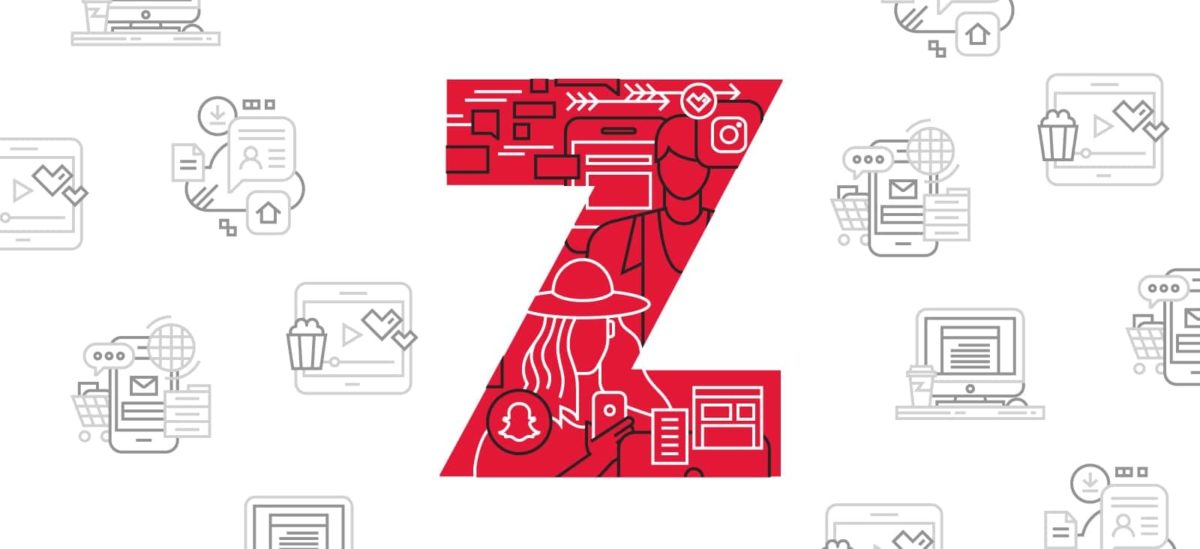As we have learnt over the past weeks of following the course Information Strategy, businesses need to control and renew their business models regularly to remain competitive and not lose power if their industry gets disrupted. Not only new technologies are entering the market demanding them to change the way they’re doing business, but also their customers change.
In 2020, 40% of all consumers in the U.S. will be coming from the so-called generation Z (Digital Marketing Institute n.d.). According to McKinsey (2018), everyone born between the years 1995 and 2010 is part of the new generation Z, which follows the millenials.
Firstly, to understand how to change current (digital) business models to meet the tastes of generation Z, one needs to understand the values, characteristics and needs of the new target group. So who is generation Z?
Generation Z values having an “undefined ID”, meaning that they do not want to be identified with only one stereotype or group (McKinsey 2018). Another term for them is “identity normads” who are quickly changing their appearance and have not only a one-sided opinion (McKinsey 2018).
Furthermore, generation Z is highly “communaholic”, valuing diversity and likes to belong to many different groups (McKinsey 2018). Through the use of the internet, generation Z’ers are able to and enjoy connecting with people from different cultural, educational or financial backgrounds (McKinsey 2018). They tend to form their groups based on interests.
Lastly, generation Z is highly realistic (McKinsey 2018). The “digital natives” are used to receiving large amounts of information through online channels and know how to filter their information (McKinsey 2018). This leads to the fact that they only have short attention spans (Digital Marketing Institute n.d.). They refuse to rely on one source only and therefore rather dedicate a short amount of time to each source (Digital Marketing Institute n.d.). Furthermore, they are highly pragmatic and value safety, coming from e.g. saving money and having a job (McKinsey 2018).
How do businesses need to change to attrackt and keep generation Z as a consumer?
According to McKinsey (2018), businesses should change their business models from possession to access. Generation Z is highly pragmatic and cares about their information consumption, while the generation does not actually care about owning the information (McKinsey 2018). This means that businesses should aim for turning their traditional products into services (McKinsey 2018). The automotive industry is an example of this process. While other generations used to prefer purchasing and owning a car, generation Z is turning to car rental services (McKinsey 2018). Car manufacturers can benefit from this trend by, instead of selling a car once, selling the car multiple times to multiple consumers (McKinsey 2018).
Generation Z is consuming goods and services mainly to express themselves (Digital Marketing Institute n.d.; McKinsey 2018). They refuse to purchase brands to fit into a certain friend group and tend to more personalized products to show off their identity (McKinsey 2018). Therefore, businesses can charge a premium for personalized and unique products. According to McKinsey (2018), 48% of generation Z’ers prefer clothes that are not solely produced for men or women, which creates an opportunity to rethink current fashion retailer business models.
Lastly, generation Z wants to be able to consume immediately (McKinsey 2018). They value being informed about the arrival time of their package and want to be able to place an order at any time and to any place they are currently at, while receiving a great and friendly customer experience (Digital Marketing Institute n.d.; McKinsey 2018). Businesses are therefore challenged to optimize their app and web design, to minimize delivery times in their supply chain and to provide excellent customer service which is available 24/7.
Do you identify yourself with generation Z? Do you know further facts about generation Z that businesses should consider when renewing their current (digital) business models?
References
Digital Marketing Institute (n.d.). ‘Is your business ready for the rise of generation Z?’. Accessed on 17 October on https://digitalmarketinginstitute.com/blog/19-10-16-is-your-business-ready-for-the-rise-of-generation-z.
McKinsey (2018). ”True Gen’: Generation Z and its implications for companies’. Acessed on 17 October 2019 on https://www.mckinsey.com/industries/consumer-packaged-goods/our-insights/true-gen-generation-z-and-its-implications-for-companies.





